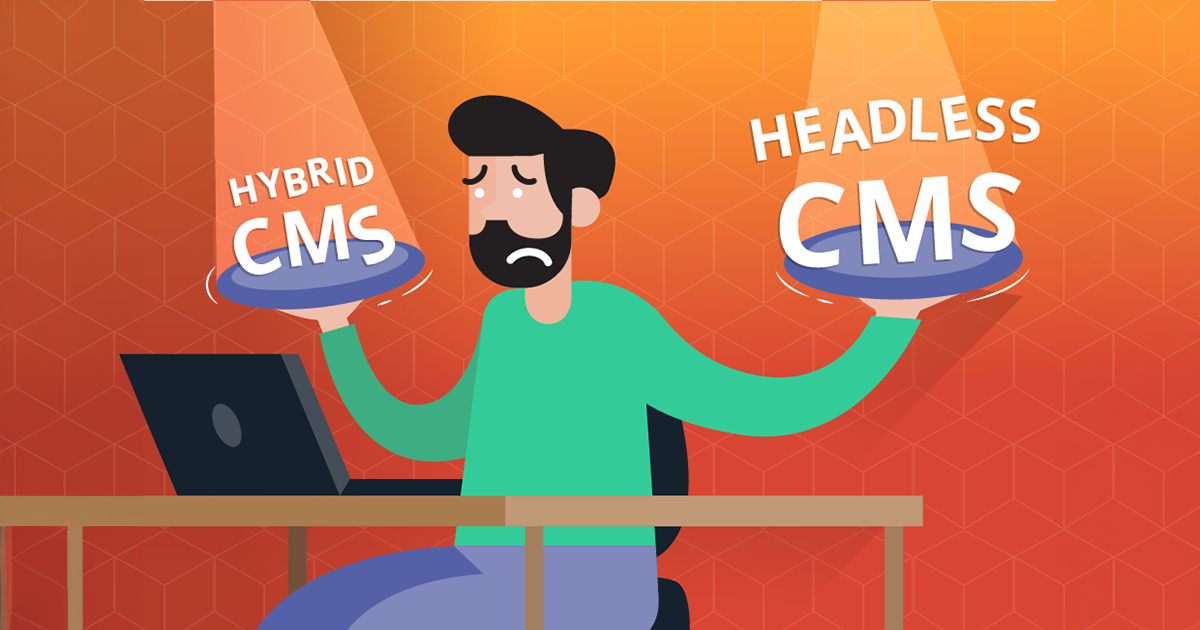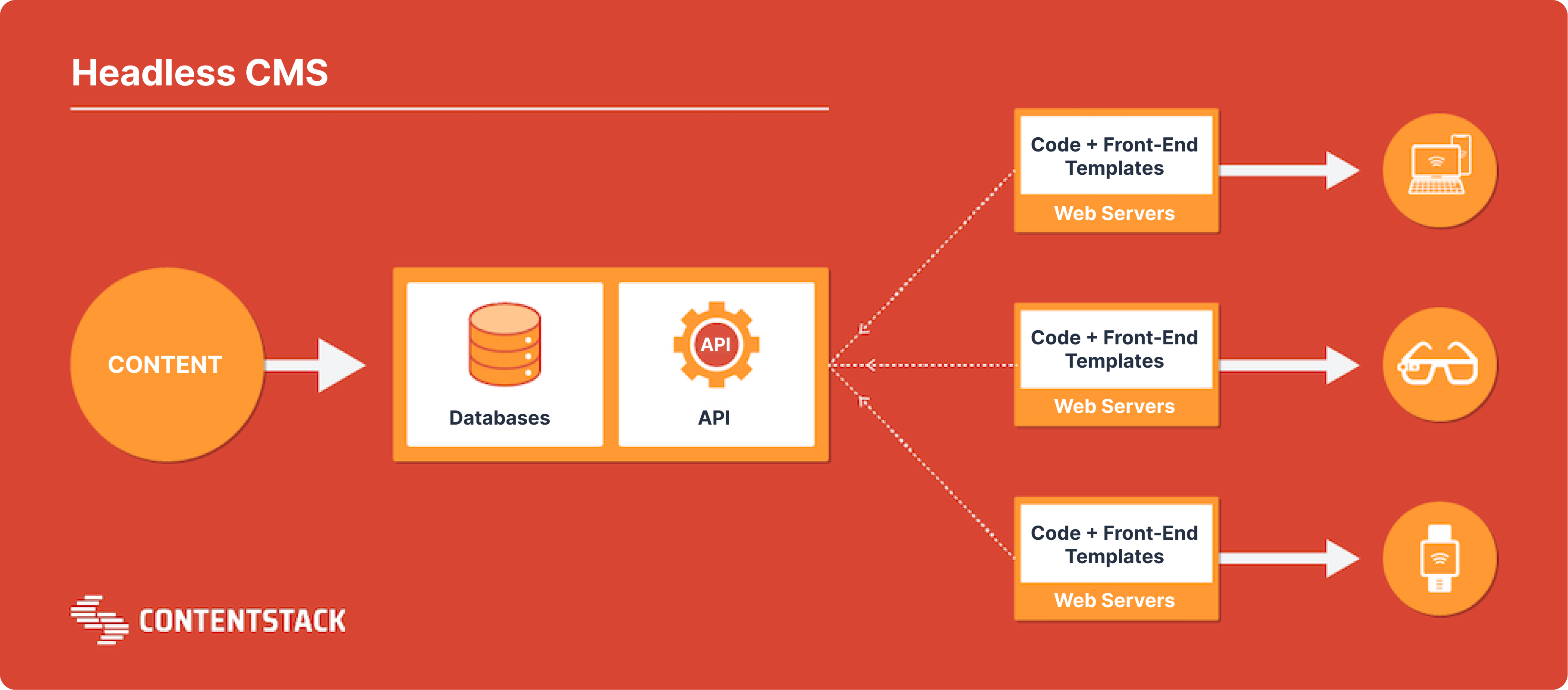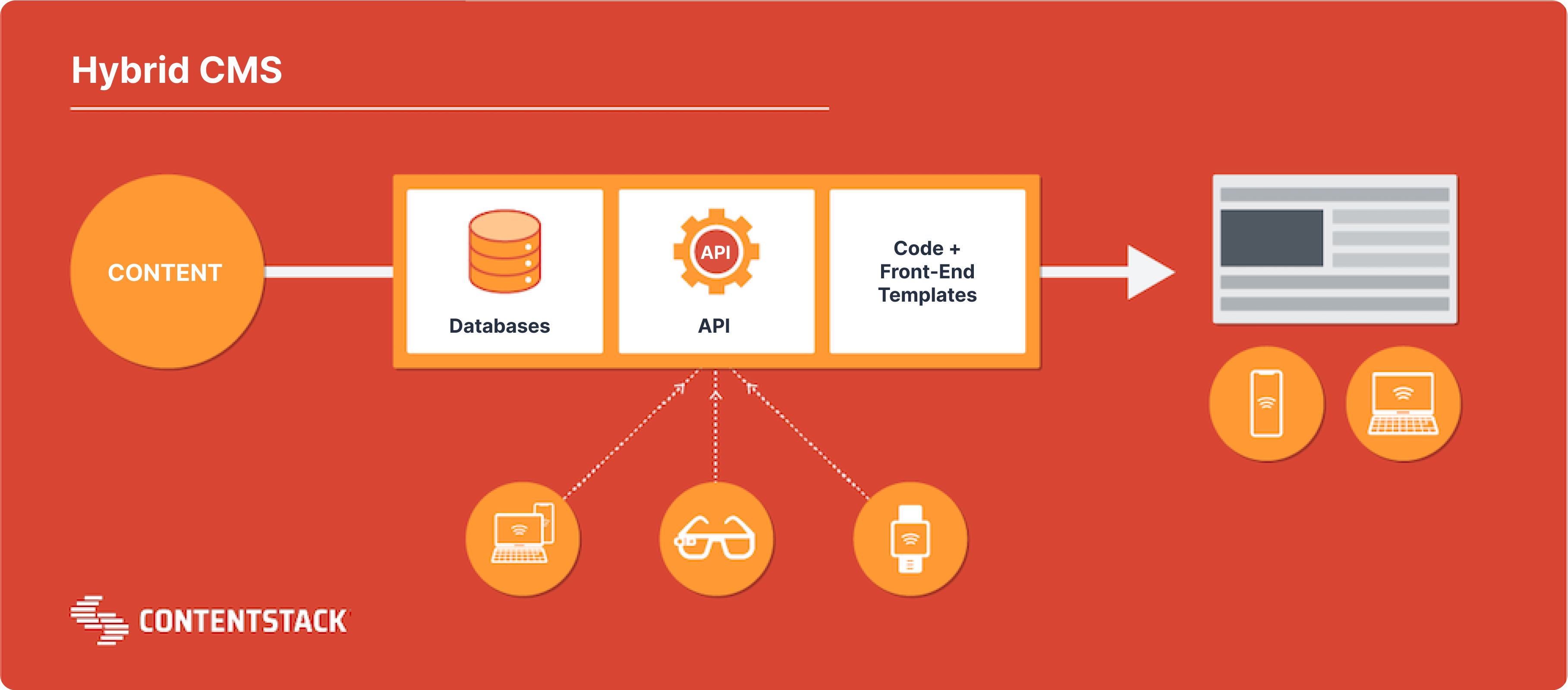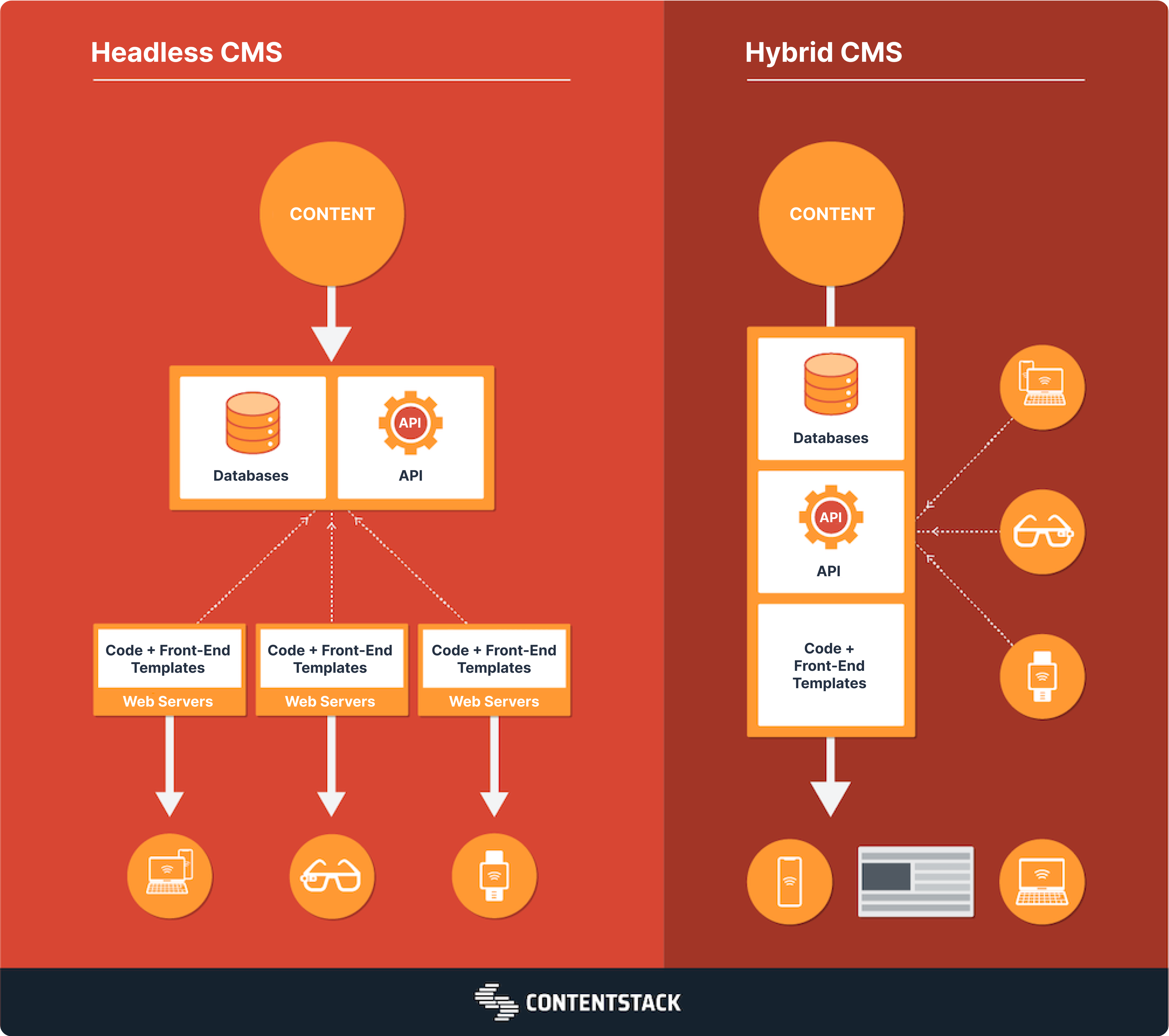Hybrid CMS vs. headless CMS: Which is right for you?

Discover the power of a headless Content Management System (CMS) in an IoT-driven business landscape. Learn how it enhances authoring, promotes content reuse, and delivers dynamic content across multiple channels. Uncover the advantages of a hybrid CMS, which is ideal for businesses prioritizing the authoring experience. Avoid future content debt with the right CMS. Curious? Schedule a demo today to learn more!
Highlights
You'll learn:
- Headless CMS is ideal for businesses delivering dynamic content across connected IoT devices. It offers increased autonomy, agility, and developer empowerment.
- Hybrid CMS combines the benefits of a traditional and headless CMS. It's suitable for businesses prioritizing the authoring experience, offering familiar interfaces for content delivery.
- Key Considerations: consider your business objectives, assess the importance of the authoring experience, and avoid piecemeal solutions to prevent future content debt.
Is your business ready to provide experiences to billions of connected Internet of Things (IoT) devices? Companies with any digital presence will need to answer that question effectively as the popularity of connected devices continues to grow. From wearables to smart speakers and smart homes, the customer’s experience and buying journey is increasingly shaped by the content they receive via these connected devices.
Businesses and governments are responding to the rapidly expanding ways citizens and consumers expect to interact with content, products, and services. The examples abound: Cities like Barcelona and Seattle are becoming “smart cities” by embracing IoT technology that boosts energy efficiency, enhances infrastructure, and improves security. Amazon recently launched a new range of connected devices, including clocks and microwaves.
Back to the question: Is your business ready to deliver experiences of that caliber at breakneck speed? If you’re figuring out how to deliver high-quality experiences to the growing number of connected devices, you first have to determine how you’re delivering content to consumers.
Let’s parse some jargon around content management systems (CMS) to help you decide which type of CMS best suits your organization and its unique needs.
What is a headless CMS?

A headless CMS is different because it does not have a proprietary front-end system that predetermines how content is shared with the end user. Content is not only decoupled from the front-end delivery layer but also front-end agnostic. Headless CMSes store content in raw form, acting as a content repository.
For content managers, this means a lack of WYSIWYG editors or templates. Instead, the system interacts with the content and various APIs that allow the content to be delivered to any device.
So why (and how) is a headless CMS solution great for enterprise marketing teams? First, decoupled content allows marketing teams to move with autonomy and agility, which is huge in beating competitors to market. It also helps businesses avoid “vendor lock.” With headless, a brand’s IT team can develop front-end applications using any framework they prefer.
At the same time, the “stripped down” back end that many headless solutions possess can create some challenges regarding the authoring experience. To solve this, IT buyers should look specifically for an enterprise-ready headless CMS platform equipped with marketing user features.
Overcome traditional CMS issues with Contentstack: Are you tired of slow development times and rising costs due to legacy monolithic suites? Contentstack offers a modern, component-based solution designed for the needs of today's enterprises. Discover agility and improved ROI. Request a demo to learn more.
Advantages of headless CMS
Here’s what you have to look forward to when adopting a headless CMS:
Disadvantages of headless CMS
If you’re going headless, you should also be aware of one of the most common disadvantages:
Now, let’s look at another kind of CMS, hybrid CMS, to see how it differs from headless.
What is a hybrid CMS?

A hybrid CMS is a headless, decoupled CMS with a front end. It is a traditional, monolithic CMS with a content-as-a-service (CaaS) API. While decoupled from the back end, a hybrid CMS includes a presentation layer similar to a traditional or coupled CMS while using a headless architecture for delivery. A hybrid CMS is a “halfway” solution. It gives developers some freedom (powered by a content API) to deliver content across multiple channels while offering marketers some of the interfaces they’re used to from traditional CMS for delivering content to web channels.
Since you can learn a lot about a solution by checking out its pros and cons, we’ve outlined those here:
Contentstack: A Leader in CMS Performance. Experience the strength of Contentstack, a standout performer in Forrester's Q3 2023 CMS report. Contentstack simplifies your digital experience with our back-end extensibility and global deployments. Request a demo to learn more.
Benefits of hybrid CMS
Limitations of hybrid CMS
Before you jump on board with hybrid, it’s essential to understand the challenges you might face:
That’s the scoop on the differences between headless and hybrid. Now, let’s combine it and figure out the ideal use cases for each.
When to use headless CMS vs. hybrid CMS

Your specific business objectives should be the foremost factor when choosing a CMS.
If your business is ready to provide experiences to billions of connected IoT devices, you should choose the best CMS for dynamic content, mobile experiences, smart spaces, connected devices, and more. You have to go with a headless CMS.
If, however, the authoring experience is a priority for you — maybe you’re just building a desktop intranet, or you’re not ready to take your business fully omnichannel just yet — then hybrid CMS will offer the features you need. Just be sure not to build a piecemeal solution that creates “content debt” that will need to be paid once you eventually go fully omnichannel.
Visit our headless CMS solutions page, or if you need more information, we invite you to download the "Ultimate Guide to Headless CMS" to keep learning. And if you want to see some staggering stats about how IoT is taking over the world, don’t miss this infographic showing how connected devices shape consumer behavior.
About Contentstack
The Contentstack team comprises highly skilled professionals specializing in product marketing, customer acquisition and retention, and digital marketing strategy. With extensive experience holding senior positions at renowned technology companies across Fortune 500, mid-size, and start-up sectors, our team offers impactful solutions based on diverse backgrounds and extensive industry knowledge.
Contentstack is on a mission to deliver the world’s best digital experiences through a fusion of cutting-edge content management, customer data, personalization, and AI technology. Iconic brands, such as AirFrance KLM, ASICS, Burberry, Mattel, Mitsubishi, and Walmart, depend on the platform to rise above the noise in today's crowded digital markets and gain their competitive edge.
In January 2025, Contentstack proudly secured its first-ever position as a Visionary in the 2025 Gartner® Magic Quadrant™ for Digital Experience Platforms (DXP). Further solidifying its prominent standing, Contentstack was recognized as a Leader in the Forrester Research, Inc. March 2025 report, “The Forrester Wave™: Content Management Systems (CMS), Q1 2025.” Contentstack was the only pure headless provider named as a Leader in the report, which evaluated 13 top CMS providers on 19 criteria for current offering and strategy.
Follow Contentstack on LinkedIn.




.svg?format=pjpg&auto=webp)
.svg?format=pjpg&auto=webp)
.png?format=pjpg&auto=webp)






.png?format=pjpg&auto=webp)

